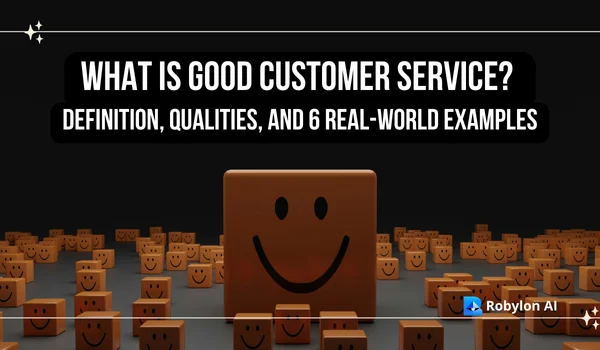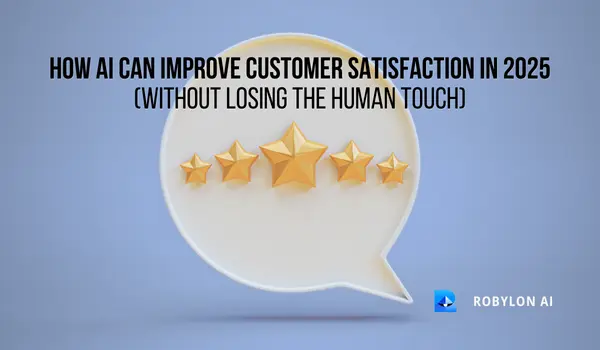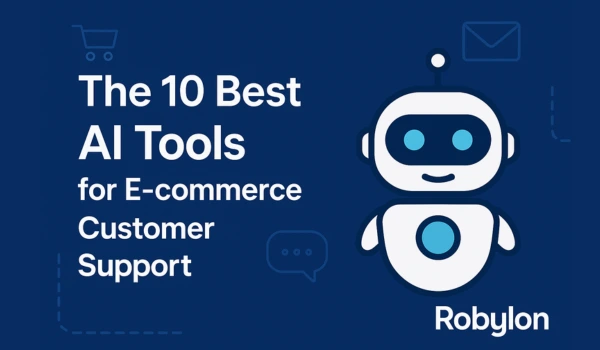TL;DR
Voice AI’s multilingual compatibility enables global sales growth by removing language barriers, offering real-time translation, and personalizing conversations at scale. Businesses see higher conversion rates, lower costs, and faster market entry when deploying multilingual voice support across sales and customer service.
This guide covers what multilingual voice AI is, how it works, use cases across the revenue org, ROI metrics, and implementation best practices to help reshape your global communication strategy.
Introduction
In today’s borderless economy, language remains one of the last major barriers to global growth. Over 80% of customers say they prefer buying in their native language, yet most businesses still operate with English-only call centers or fragmented multilingual teams. The result? Lost revenue, poor experiences, and higher operational costs.
Multilingual voice AI changes this by combining advanced speech recognition (ASR), text-to-speech (TTS), and conversational AI, enabling companies can deliver seamless conversations in dozens of languages instantly and at scale. From outbound sales to customer support, multilingual AI voice agents help businesses reach more markets, close more deals, and serve customers 24/7 without ballooning costs.
This blog breaks down what multilingual voice AI is, how it drives global sales, real-world use cases, ROI, challenges, and what the future holds. You’ll also see how Robylon AI is helping enterprises transform their multilingual engagement strategy.
Ready to hear your brand speak every language? Book a demo
What Is Multilingual Voice AI
Multilingual voice AI is software that listens, understands, and speaks in many languages. It blends voice recognition, conversational AI, and text-to-speech (TTS) to hold natural, real-time conversations with customers worldwide. Teams use it to power voice AI for sales, multilingual voice support, and global sales programs at scale.
What powers Voice AI?
- Speech recognition/voice recognition: Software that converts spoken audio into text with timestamps. It enables systems to “hear” the customer in any supported language.
- Automatic Speech Recognition (ASR): The engine behind speech recognition that detects words, punctuation, and speaker turns with confidence scores.
- Text-to-Speech (TTS): Software that turns text into natural-sounding speech in multiple voices and languages so the system can “speak back.”
- Natural Language Processing (NLP): Models that interpret intent, entities, and context to generate accurate responses within conversational AI flows.
Key components that make it multilingual
- Language detection: The system identifies the caller’s language within seconds and routes the conversation accordingly.
- Speech translation: The system can translate recognized speech into a working language for processing, then deliver TTS in the caller’s original language.
- Sentiment analysis: Models score tone and emotion to guide next steps, escalation, and multilingual contact center coaching.
What to track from day one
Use measurable, business-friendly metrics: Conversion rate, first call resolution (FCR), average handle time (AHT), containment, escalation rate, CSAT, and cost per resolution. Review results by language, region, and queue.
How Multilingual Voice AI Drives Global Sales
1. Real-Time Understanding & Response
The system listens, understands, and replies in seconds. Voice recognition converts speech to text. Then, AI recognition and NLU map intent and entities. Real-time voice translation routes content across languages. Text-to-speech (TTS) returns a natural reply in the caller’s language.
Why does it sell?
Buyers get help in the language they prefer, and agents avoid manual translation. Multilingual voice support removes friction at the highest-intent moment: the call.
What to track: First-call resolution, containment, latency to first response, transfer rate by language, CSAT
2. Personalization at Scale
Conversational AI uses history, context, and policies to tailor replies; an AI agent or voice bot adapts tone and guidance to each region. Sentiment analysis flags frustration or delight and adjusts the flow.
Why does it sell?
Calls feel local and relevant, their discovery is faster, and further steps are clear. Personalization increases conversion and reduces repeat contacts.
What to track: Conversion rate by segment, intent coverage, sentiment trend, average handle time, upsell/appointment rate
3. Funnel Acceleration
Lead qualification via voice verifies need, budget, and timing during the call. Voice AI for multilingual sales outreach runs follow-ups and reminders in the prospect’s language. Qualified calls hand off to the right representative with full context.
Why does it sell?
Less back-and-forth, fewer no-shows, higher meeting quality, and teams move faster from first contact to demo and from demo to close.
What to track: Speed-to-lead, qualified rate, show rate, stage-to-stage conversion, time-to-close
4. Coverage & Availability
Multilingual AI voice agents run 24/7 across regions and queues, handle spikes without hiring surges. Their capacity scales to new languages and markets.
Why does it sell?
You reach buyers beyond a single language or timezone and open doors in new countries. You can support voice AI for global markets with predictable costs.
What to track: Service level by language, abandonment rate, after-hours volume, cost per resolution, and new-market revenue mix
Multilingual Voice AI Use Cases (Across the Revenue Org)
1. Outbound Sales
Use it for: Cold outreach, reactivation, event follow-ups, renewal saves
How it works:Voice AI for outbound sales places or answers calls in the prospect’s language. Multilingual conversational AI detects language in seconds and adapts tone and pacing. Prompts drive discovery, objection handling, and scheduling while the system logs outcomes to CRM.
Why it works: It removes the language barrier in sales at the highest-intent moment. Teams reach more people in less time with consistent quality.
KPIs: Speed-to-lead, qualified rate, meeting set rate, show rate, stage conversion, cost per opportunity
2. Inbound & Customer Support
Use it for: Account help, billing, order status, password resets, warranty, claim status
How it works:Voice AI in customer support answers calls in the caller’s language. Multilingual customer support handles routine intents, authenticates, and updates tickets. Complex issues escalate with full context to human agents inside the multilingual contact center.
Why it works: It shortens queues, improves first contact resolution, and reduces transfers.
KPIs: Containment, AHT, FCR, transfer rate, CSAT by language, cost per resolution
3. E-commerce & Marketplace
Use it for: Pre-purchase guidance, size and fit, back-in-stock, order and delivery status, returns and exchanges.
How it works:Multilingual AI for e-commerce gives instant answers in the shopper’s language. Catalog, pricing, and policy data shape responses. Voice-enabled sales can collect payment info securely or hand off to checkout.
Why it works: It reduces abandonment and improves conversion in new regions without new headcount.
KPIs: Add-to-cart rate, conversion rate, return handling time, refund time, NPS by language, repeat rate
4. Cross-Border Expansion
Use it for: New-market launches, country rollouts, seasonal peak coverage, and after-hours service.
How it works: Multilingual AI voice agents run 24/7 in targeted geographies, add new languages and queues with configuration, not new teams. Reporting shows global reach and performance by region for global market expansion planning.
Why it works: It adds capacity and consistency across languages and time zones with predictable cost.
KPIs: Service level by language, abandonment, after-hours volume share, cost per ticket, revenue mix by region, time-to-launch
Implementation Guide: From Pilot to Scale
Core Architecture
Build a simple, stable path from voice to insight to action.
- Capture: Utilize automatic speech recognition (ASR) for rapid and accurate transcripts, facilitating diarization and timestamps.
- Understand: Run NLP for intent, entities, and policy checks, and add language detection in the first seconds of audio.
- Translate when needed: Apply speech translation only when the processing language differs from the caller’s language.
- Respond: Use text-to-speech (TTS) for clear, natural replies in the caller’s language, and keep latency budgets per step.
- Guardrails: Add profanity filters, redaction, and allow lists for critical terms.
- Observability: Log turn-level events, errors, and timings, store per-language metrics.
Systems Integration
Connect conversations to the systems that run the business.
- Telephony: Ingest and place calls through your carrier, support SIP or cloud telephony, and map numbers to queues and languages.
- CRM: Use integrating voice AI with CRM patterns; create or update contacts, log activities, push call summaries, and next steps.
- Helpdesk/ticketing: Attach transcripts, tags, and resolution data, then trigger workflows for escalations.
- Data warehouse: Stream events to the data warehouse for reporting and modeling. Keep a stable schema for sessions, turns, and outcomes.
- Webhooks: Publish start, intent-resolved, escalation, and end events. Retry with backoff.
Quality Operations
Measure, review, and improve every week.
1. Signal quality: Track voice recognition errors and noise rates
2. Model quality: Monitor voice AI recognition for intent accuracy and entity recall by language
3. Experience quality: Use sentiment analysis and resolution outcomes to spot friction
4. Test sets: Maintain “golden” multilingual test calls, including accents and domain terms
5. Scoring: To maintain reliable multilingual performance, quality should be measured at both the technical and business levels
- WER and Slot Accuracy (by language): Track Word Error Rate (WER) and accuracy of critical slots (names, product codes, compliance phrases) across each supported language.
- Latency (P50/P95 per step): Measure processing time at each stage, automatic speech recognition (ASR), NLP, text-to-speech (TTS), at both median (P50) and high-load thresholds (P95).
- Containment Rate: Calls fully resolved by the AI without escalation
- First Call Resolution (FCR): Percentage of issues solved on the first contact
- Average Handle Time (AHT): Duration from greeting to resolution; benchmark for efficiency gains
- Customer Satisfaction (CSAT): Post-call survey ratings in native language
- Escalation Rate: Percentage of calls routed to human agents, tracked by intent and language
Know which calls help and which hurt by tracking these metrics.
6. Feedback loop: Tag failures, fix prompts or knowledge, retrain lexicons, and redeploy with version notes.
Future Outlook: Beyond Translation to Personalization
Multilingual voice AI is moving quickly from being a translation layer to becoming a true personalization engine. The next generation of capabilities will shape how brands engage with customers in every market.
1. Hyper-Local Accents and Dialects
Next-gen text-to-speech (TTS) models are evolving to replicate regional variants such as Mexican Spanish vs Castilian Spanish or Tamil vs. Hindi-accented English. This level of detail builds trust and familiarity. Customers feel they are speaking with someone “local,” even when served by multilingual AI voice agents.
Impact on business: Improves authenticity and increases conversion by mirroring cultural nuance.
2. Context-Aware Proactive Calling
Future AI agents will not wait for customers to reach out. They will use account signals and predictive analytics to launch proactive multilingual voice support, for example, reminding about renewals, updating on shipments, or checking satisfaction before churn signals appear.
Impact on business: Shortens sales cycles and improves retention.
3. Emotion-Driven Sales Scripts
Advanced conversational AI will deliver fine-grained emotional control. A voice bot/voice agent can sound calm and reassuring for service calls, and excited or upbeat for upsells. This extends sentiment analysis from monitoring to actively shaping conversations.
Impact on business: Drives higher upsell acceptance and raises CSAT in support.
4. Unified Omni-Channel Identity
Brands will soon carry a single cloned voice identity across channels: phone, video, web, and even AR shopping assistants. This provides consistency that builds brand memory globally.
Impact on business: Reinforces identity across every touchpoint, supporting both voice AI for sales and support.
5. Continuous Regulatory Evolution
As adoption scales, regulations around PII masking, consent, and cross-border data will tighten. Providers will need to meet standards similar to healthcare’s HIPAA or GDPR in Europe. Patronus AI highlights the growing demand for “quality, compliance, and ethical standards.”
Impact on business: Compliance will shift from a cost to a competitive advantage, as customers trust vendors who meet strict data policies. Learn the rollout errors we see most and how to recover them in our detailed blog, AI Call Rollouts: 10 Mistakes & Recovery Strategies of 2025.
Emerging Multilingual Trends to Watch
- Real-time translation in multiparty conversations: Enabling multilingual meetings where each participant speaks their own language
- Emotional intelligence across cultures: Systems that adapt tone to cultural expectations
- Voice identity preservation in translation: Keeping a speaker’s unique vocal identity intact across language
- Multimodal interactions: Combining voice, video, and text for rich, inclusive communication
These multilingual shifts ride on voice AI, multimodal UX, and autonomous agents. Get the full rundown in AI Chatbot Trends 2025
Challenges & How to Solve Them
Implementing multilingual voice AI brings significant benefits, but also unique challenges. Addressing them early ensures reliable performance, compliance, and strong customer experiences.
1. Accuracy Across Languages & Accents
Challenge: How accurate is speech recognition in different languages? Accuracy varies depending on dialects, accents, and cultural expressions. A Spanish model trained on European Spanish may misinterpret Latin American phrasing.
Solution
- Train automatic speech recognition (ASR) models on diverse datasets that include regional accents.
- Utilize custom vocabularies and language packs to define domain-specific terms.
- Continuously improve accuracy with feedback loops from call transcripts and customer corrections.
- Run native-speaker testing for each priority market.
Business impact: Better recognition raises first call resolution (FCR) and lowers escalation rates, improving satisfaction and reducing costs.
2. Real-Time Latency & Infrastructure
Challenge: Voice AI must process speech with minimal delay. If latency exceeds 300 ms per turn, conversations feel robotic and customers lose trust. Global rollouts also face challenges with regional network hops and codec mismatches.
Solution
- Implement stream buffering with early partial hypotheses.
- Deploy regional POPs (points of presence) to reduce round-trip time.
- Standardize on low-latency codecs (e.g., Opus or PCM at 16 kHz) for better clarity.
- Monitor P95 latency per language and region to stay within service level agreements (SLA).
Business impact: Smooth, near-real-time flow boosts conversion and reduces call abandonment.
3. Domain Adaptation
Challenge: Industry-specific terms (medical, finance, logistics) are often misrecognized by generic models. Customers lose confidence when technical words are consistently wrong.
Solution
- Create custom vocabularies for industry terminology.
- Build product dictionaries linked to CRM or catalog data.
- Add glossary entries for brand names, product SKUs, and compliance statements.
- Update lexicons with feedback from transcripts regularly.
Business impact: Accurate terminology builds trust, improves voice AI recognition, and shortens AHT.
4. Change Management
Challenge: Technology is only part of the solution. Sales and support teams must adapt workflows. Without change management, adoption lags and KPIs stall.
Solution
- Update sales playbooks with AI-assisted call scripts and escalation triggers.
- Train managers on how to interpret sentiment analysis and voice analytics dashboards.
- Create QA loops to review multilingual conversations weekly.
- Involve frontline staff in pilot testing to build buy-in.
Business impact: Teams trust the system, adoption rises, and metrics like conversion rate and CSAT improve.
How Robylon Helps Businesses Scale Multilingual Sales
At Robylon, we go beyond translation to deliver multilingual AI voice agents designed for sales impact. Our platform is designed for enterprises that want to expand globally without scaling human headcount linearly.
- Real-time voice recognition across 40+ languages: Accurate speech recognition and voice AI recognition tuned for regional dialects and business domains.
- Seamless CRM and telephony integrations: Robylon integrates with Salesforce, HubSpot, Freshdesk, and leading telephony providers, so every conversation updates your systems in real time.
- Sales-focused workflows: From lead qualification via voice to demo scheduling, Robylon helps accelerate funnel conversion in multiple markets simultaneously.
- Analytics that matter: Built-in containment rate, FCR, AHT, and CSAT dashboards give you clarity on performance by language, market, and use case.
- Compliance ready: With PII masking, role-based access, and region-specific call-recording rules, enterprises stay aligned with GDPR, HIPAA, and PCI standards.
Conclusion
Multilingual voice AI is no longer optional; it is the foundation for global sales growth. Businesses that deploy voice AI for sales and multilingual voice support consistently see higher conversion rates, reduced costs, and faster entry into new markets. Beyond removing the language barrier in sales, these systems build customer trust by delivering conversations that feel personal, fluent, and local.
Why Act Now?
- Expand global sales reach in weeks, not months.
- Reallocate agents from repetitive queries to revenue-driving conversations.
- Deliver multilingual voice support 24/7 at a fraction of the traditional cost.
Book a demo to explore how Robylon AI can help your team scale globally.
FAQs
What use cases exist for multilingual voice AI in sales?
Common sales use cases include lead qualification via voice, event follow-ups, reactivation, renewal saves, and demo scheduling. For ecommerce, voice-enabled sales support pre-purchase guidance and secure payment handoff. Track qualified rate, show rate, and revenue by language.
How accurate is speech recognition in different languages?
Accuracy depends on training data, accent diversity, and domain vocabulary. To improve results, use ASR models tuned for each target language and add custom terms for products and compliance phrases. Test with native speakers from multiple regions and monitor Word Error Rate (WER) per language.
What is the ROI of multilingual voice AI?
ROI comes from a higher conversion rate, lower handle time, and reduced staffing costs. Each added language unlocks a new segment with minimal marginal cost. Measure revenue lift from AI-assisted calls, cost per resolution, and time-to-launch in new markets.
What are the main challenges with multilingual voice agents?
The big hurdles are accuracy across accents, real-time latency, and domain adaptation. Models can miss regional phrasing or industry terms. Infrastructure can add a delay to cross-region calls. You also need change management so teams adopt new workflows. Solve these with diverse training data, regional POPs, custom vocabularies, and QA loops.
How do you implement multilingual voice AI?
Start with a pilot in one or two languages. Map intents, define guardrails, and build a simple path: ASR → NLP → TTS. Integrate with CRM, telephony, and ticketing so outcomes sync automatically. Use domain dictionaries for product names and compliance terms. Review analytics weekly and tune prompts, vocabularies, and routing. When KPIs meet targets, scale to new languages and queues. This structured rollout keeps risk low and value high.
Can voice AI support multiple languages in real time?
Yes, modern platforms combine language detection, low-latency ASR, and TTS to respond in real time. If processing requires a bridge language, speech translation runs in the background, and the reply is spoken in the caller’s language. This enables multilingual voice AI to switch languages mid-call when needed.
How does voice AI drive global sales?
Voice AI for sales removes the language barrier during high-intent calls. It qualifies leads, explains offers in the caller’s language, and books demos in seconds. Conversational AI personalizes tone and content by region, which raises conversion rate and reduces no-shows. Teams expand into new markets without building large local teams. Sales managers track KPIs such as speed-to-lead, stage conversion, and revenue by language to guide growth.
What is multilingual voice AI?
Multilingual voice AI is software that listens, understands, and speaks across many languages. It combines automatic speech recognition (ASR) for transcription, NLP for intent, and text-to-speech (TTS) for natural replies. The system detects language automatically and can apply speech translation when needed. The goal is fast, accurate help that feels local and human, at a global scale.







.png)
.webp)

















